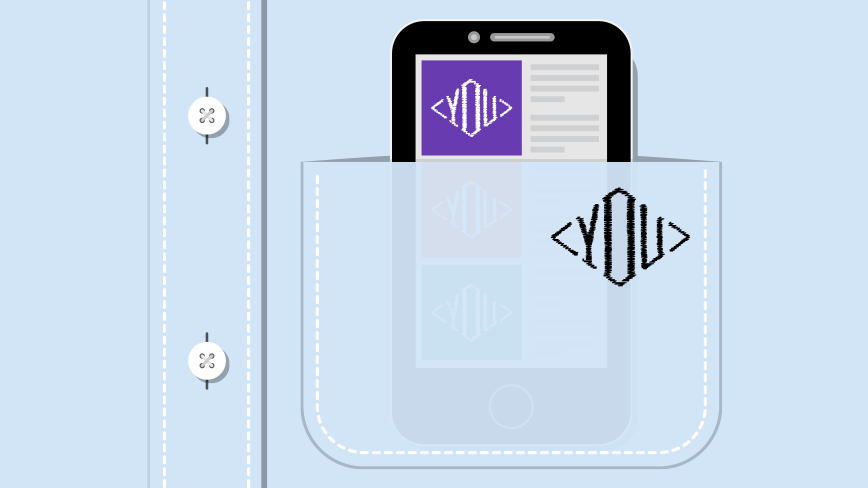See why and how personalization at scale has turned into an important differentiator for brands and the strategies they use to deliver the ideal 1:1 messaging.
Personalization has quietly revolutionized the way brands speak to their audiences. Personalized experiences have spread from just a few websites to nearly every advertisement, content site, e-commerce platform, and app. While well over half of marketers are in the process of implementing a personalization strategy, only 6% are in the advanced stages– meaning most marketers still have a lot of potential for growth.
Audiences have forced marketers’ hands by expecting personalized experiences nearly everywhere they turn. In an age where every person has a customized Facebook feed and suggested Netflix library, marketers only have moments to capture their audience and messages broadcast to the generic everyman can feel tone deaf. Brands suddenly have an expectation not just to deliver personalization, but to operate personalization at scale so that everyone gets their own experience.
“Today’s consumer wants something more than mass messaging,” says marketer Ryan Shelley. “In a world where almost everything is customizable, the customer expects a personalized experience.”
With personalized experiences scaled to a massive level, consumers not only get the benefit of curated content, but they also get to avoid common headaches: ad fatigue, spam, and the feeling that brands don’t get their values. In turn, marketers can earn higher ROI while learning how to meet their audience’s needs on a 1:1 basis. Everybody wins.
For these reasons and more, personalization at scale will continue to see increased adoption and rapid advancement as the link between brand and audience grows closer.
Personalization at Scale Relies on Smart Segmentation Strategies
Personalization can take many forms and relies on many different strategies. No matter what strategy they use, though, marketers must follow one simple rule: know thy consumer. Contrary to what some believe, personalized marketing is important even in mass market products.
“If you’re selling toothpaste, if you’re selling laundry detergent … there is a belief that I need everybody, so let me have this broad-based demo,” says our friend and COO at Hearts & Science, Kathleen Brookbanks. Instead, it is important to approach each segment independently, even when the product millions of people buy collectively is the exact same. This approach is why Brookbanks tells her clients, “you need all those people, but how you communicate to different people as a function of their behaviors needs to be different.”
Personalization at scale only works if you can find meaningful ways to interpret every audience member and assign them accurate segmentation values. Your dynamic content and messaging must also be able to react to segmentation data and deliver effective corresponding messaging.
For instance, by matching CRM data to an online browser’s identity, a brand can create a personalized overlay display ad for the person when they visit a website. Additionally, marketers could use loyalty and customer value programs to customize their landing pages, tailor email messages appropriately, and suppress irrelevant messages.
Many marketers use dynamic signals such as location or weather to tailor messaging to their audiences. More advanced practices use segmentation to inform programmatic creative, which allows the real-time selection and assembly of certain ad elements to correspond to the visitor’s most important values. Perhaps one visitor learns about an SUV’s earth-friendly fuel-efficiency, for example, because of the environmental news sites they visit– while another user marvels at the same SUV’s off-road capability because they tend to look up camping sites and national park tours.
Over time, campaign performance data on CTRs and conversions can create more sophisticated and accurate look-alike modeling to expand reach and pinpoint who would respond most enthusiastically to what. Segmenting becomes hyper-segmenting, and marketers can introduce more variables to make every consumer identity as multifaceted as the consumer it represents.
Eventually, martech can advance to the point where every person is treated differently on a mass scale, giving them the most pleasant, relevant experience possible while playing on all their most powerful emotional triggers.
How Brands Can Get Personalization Right
- Deploy the right technology: Advertisers should assess and implement the right mix of technology, including web analytics software, CRM database management, and content management systems to help facilitate their personalization practices.
- Promote cross-sell opportunities: E-commerce brands can use a customer’s previous buying patterns to suggest an ideal next purchase as opposed to retargeting with an item they already removed from their cart or bought.
- Build, test, and continually optimize sequential messaging: A series of messages that flows logically and nurtures a purchase are going to be more effective than one single offer repeated constantly.
- Identity management: A brand must evaluate a martech stack’s ability to forge meaningful identities and serve them a connected story across devices. Personalization that gets a customer’s preferences dead wrong can often be more frustrating for them than generic, mass-media messages.

